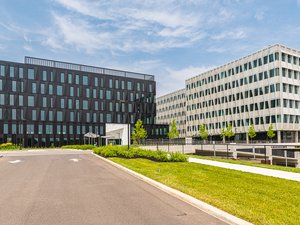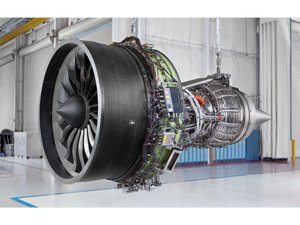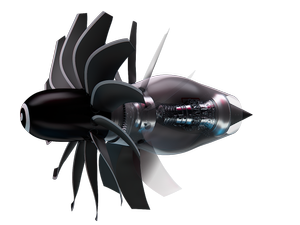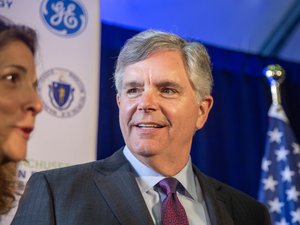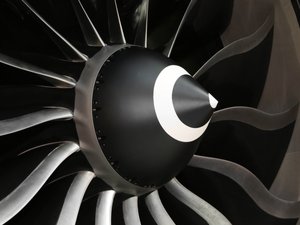
GE Aerospace will work with NASA to study a next-generation passenger jet concept that could go Mach 4 – four times the speed of sound and as much as five times faster than normal commercial airliners.
Key to the project is designing the aircraft to be quiet, avoiding the sonic boom produced by aircraft when they break the sound barrier.
NASA on August 22 announced two 12-month contracts to companies to develop concept designs and technology roadmaps for the theoretical aircraft, which could travel at eye-watering speeds of up to 3,045 mph.
Contemporary airliners cruise at around 600 mph, about 167 mph short of the speed of sound.
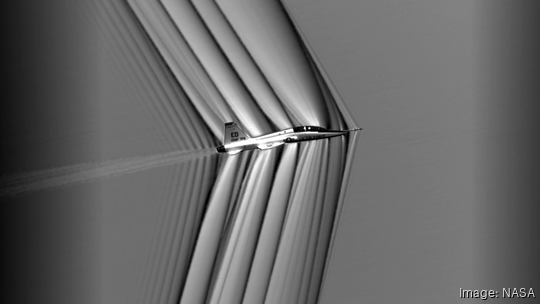
The last time civilian passengers traveled between continents on a commercial supersonic aircraft was 2003, when the Concorde landed for the final time. That supersonic airliner, of which only 20 were ever made, boasted a cruising speed of around 1,350 mph. Passengers went from New York City to Paris in just under three hours.
A Mach 4 aircraft would get them there in 90 minutes.
Boeing will lead the first team partnering with GE Aerospace, Georgia Institute of Technology's Aerospace Systems Design Lab and others. The second team will be led by Northrop Grumman Aeronautics Systems with partners including Blue Ridge Research and Consulting and Boom Supersonic. Rolls-Royce North American Technologies will work on both teams.
Right now, the basic feasibility of a quiet supersonic passenger aircraft is in question, not to mention its business case and usefulness. Many nations, including the U.S., prohibit supersonic flight over land, prompting NASA’s initial studies to focus on transoceanic travel. The agency determined a potential market for around 50 establish routes, though it has not revealed them.
NASA is working separately with GE Aerospace on supersonic overland flight with its Quiet Supersonic Technology (“QueSST”) mission, a government-industry initiative to build and demonstrate the X-59 research jet with technology that reduces the loudness of a sonic boom “to a gentle thump” for those on the ground.
The Lockheed Martin X-59 QueSST is equipped with a GE Aerospace F414-GE-100 turbofan engine resulting from a NASA research collaboration that began in 2002. The engine is a new single variant of GE’s F414 engine that power’s the Boeing F-18 Super Hornet. The QueSST jet’s narrow airframe and forewings minimize shock waves. It’s expected to produce ground noise of around 60 dB(A), equivalent to a conversation in a restaurant, or around one-onethousanth as loud as current supersonic aircraft.
The QueSST program followed GE's successful demonstration of an engine in 2006 and successful testing of the single-variant F414 in 2019. GE will provide two engines for the project with an option for a third.
“X-59 has a mission unparalleled in terms of its cool factor. There’s been no shortage of folks who want to help and work on this program. It’s something that GE is extremely proud to be a part of,” Anthony Hazlett, GE’s X-59 demo model engineer, said in 2020 when the engine was delivered to NASA.
NASA aims to fly the aircraft over several U.S. communities in late 2023 or early 2024 to gather data on “human responses to the sound.” By 2027, NASA will deliver the data to regulators at the Federal Aviation Administration and international agencies. NASA hopes the data will prompt regulators to rewrite the rules so that supersonic flight over land is regulated based on noise levels and not what a GE spokesperson described as the “arbitrary speed” of Mach 1.
“We’re definitely ready to write a new chapter in the history of supersonic flight, making air travel over land twice as fast, but in a way that is safe, sustainable and so much quieter than before,” Peter Coen, NASA’s QueSST mission integration manager, said.
Neither the X-59 nor its engine, even if successful, will be used in any future commercial supersonic aircraft. But the technologies that prove out in the QueSST program could someday work their way into whatever is born in the Boeing and GE Aerospace test labs.
A NASA spokesperson described the issuance of the 12-month contracts “the next phase of high-speed travel research.”
The teams will develop roadmaps exploring the possibilities, risks and challenges. They will identify specific technologies needed to make travel at speeds Mach 2 and above possible.
The roadmaps will include airframe, power, propulsion, thermal management and composite materials that can hold up under high-supersonic speeds. They will also create non-proprietary designs for concept vehicles.
“It’s important to innovate responsibly so we return benefits to travelers and do no harm to the environment,” Mary Jo Long-Davis, manager of NASA’s Hypersonic Technology Project, said.
